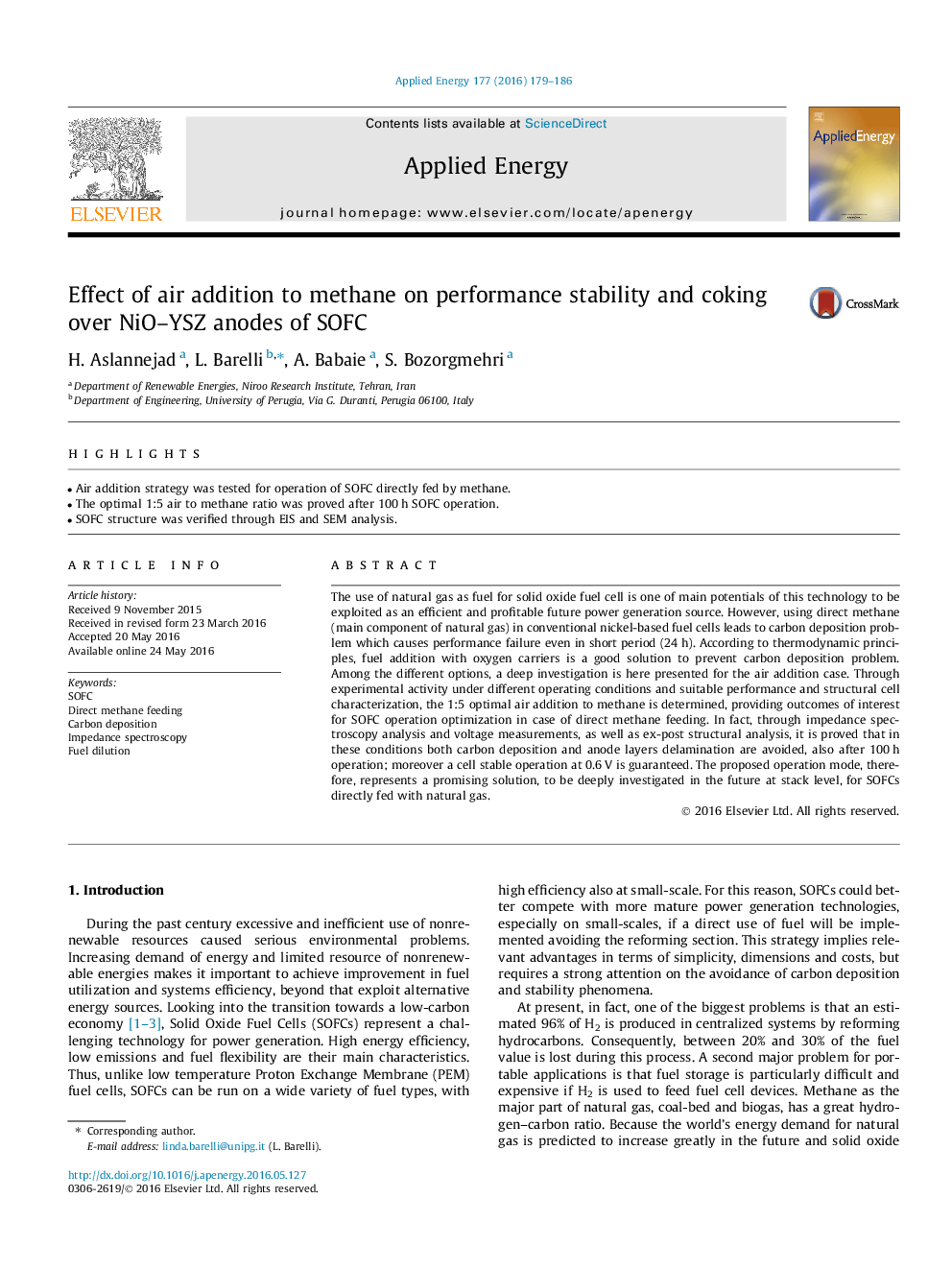| Article ID | Journal | Published Year | Pages | File Type |
|---|---|---|---|---|
| 6682666 | Applied Energy | 2016 | 8 Pages |
Abstract
The use of natural gas as fuel for solid oxide fuel cell is one of main potentials of this technology to be exploited as an efficient and profitable future power generation source. However, using direct methane (main component of natural gas) in conventional nickel-based fuel cells leads to carbon deposition problem which causes performance failure even in short period (24Â h). According to thermodynamic principles, fuel addition with oxygen carriers is a good solution to prevent carbon deposition problem. Among the different options, a deep investigation is here presented for the air addition case. Through experimental activity under different operating conditions and suitable performance and structural cell characterization, the 1:5 optimal air addition to methane is determined, providing outcomes of interest for SOFC operation optimization in case of direct methane feeding. In fact, through impedance spectroscopy analysis and voltage measurements, as well as ex-post structural analysis, it is proved that in these conditions both carbon deposition and anode layers delamination are avoided, also after 100Â h operation; moreover a cell stable operation at 0.6Â V is guaranteed. The proposed operation mode, therefore, represents a promising solution, to be deeply investigated in the future at stack level, for SOFCs directly fed with natural gas.
Related Topics
Physical Sciences and Engineering
Energy
Energy Engineering and Power Technology
Authors
H. Aslannejad, L. Barelli, A. Babaie, S. Bozorgmehri,
